(Originally published 2nd December 2022, updated October 2023)
During the early morning sunrise on December 20th 2021, we (Hugh Newman and JJ Ainsworth) witnessed a stunning winter solstice alignment phenomenon at Karahan Tepe in southeast Turkey that had not been observed since it was deliberately covered over at the end of its use, c.10,000 years ago. Karahan Tepe is 11,400 years old, so the authors propose this is the earliest ever proof of the winter solstice being incorporated into a megalithic structure and redefines what we know about the sophistication of the Pre-Pottery Neolithic people at this time.
The alarm woke us suddenly at 5am. In our confused state, we remembered we were against the clock. We simply had to be at the site for sunrise, or we may never get to see the newly excavated Pre-Pottery Neolithic complex of Karahan Tepe. The previous evening, Hugh received a message from Ismail after he had briefly visited the site in the afternoon (Ismail Can is a member of the family that owns the land where the excavation is taking place). The message said that ‘officials’ and the ‘archaeologists’ were coming ‘first thing in the morning’ to cover over the site for the winter. We dressed, washed, and grabbed our cameras, eating our breakfast in the car. The hotel’s restaurant was yet to open, but we managed to snag these few items. It was still dark outside, and the ground was wet. Clouds were in the sky, and as we climbed into the rental car, we prayed they would disperse in time for the sunrise.
Şanlıurfa city is a beautiful place before dawn. Quiet and still, the caves that lined the streets were still artificially lit as we sped by them to get on the highway out of town. We knew where we were going and decided on one of three possible routes. The two shorter but more treacherous routes, or the one that took us to a newly paved road leading to the site. We decided on the latter.
As we drove at a speed probably on the edge of the legal limit, we discussed what we might see when we got there. Today was the winter solstice. It was cold, and it was windy, but the forecast looked good. We felt we would witness something remarkable this morning as our good friend and author Andrew Collins had found an alignment recording the summer solstice sunset at the place we were heading to. The winter sunrise is on the same alignment but in the opposite direction, so was this also built into the site, we wondered?
The clock was ticking, and we felt we’d be lucky to get a few minutes at the site before the officials arrived. We turned off the highway on the newly paved road, taking us through the arid Tektek mountains with dozens of stone hills protruding out of a martian, dead landscape. It felt like visiting another world. We saw blue skies for the first time and breaks in the clouds. As we arrived, we checked the time. It was a few minutes after sunrise, yet some clouds were still blocking the light. Would we see anything worthy of this effort? Would the sun grace us with its presence?
The new visitor centre was now in place, and we messaged Ismail, who agreed to be our official guide for the morning. We drank an obligatory glass of tea with him and his brothers before hurriedly climbing the hill to the area of excavation. The sun was starting to break through, and as the cold wind made its icy presence felt, first light was hitting some of the enclosures. We had made it to Karahan Tepe, arguably the most important archaeological discovery of the 21st century, and we were not disappointed.
The Site
Karahan Tepe (formerly called Keçili Tepe) lies approximately 37 km (23 miles) southeast of its more famous sister site, Göbekli Tepe, which was built a few hundred years earlier. Karahan Tepe has been dated to 11,400 – 10,200 years old, with over 250 monoliths recorded at the site, mostly T-pillars, as well as many unique stone carvings and statues recently unearthed. Like at Göbekli Tepe, this site is covered with many strange depictions of humans, symbols, and animals, but also with a sunken pit containing phallic-shaped pillars and a 3D portrayal of a human head with a serpentine neck. The artefacts from the excavation are now on display at the Şanlıurfa Archaeology Museum.
Karahan Tepe is a unique Pre-Pottery Neolithic complex built upon a large limestone hill in the Tektek Mountains. When viewing the horizon from its peak, it feels like it is in the middle of nowhere. There are several sites of a similar age and style being excavated right now in a zone called ‘Taş Tepeler,’ meaning ‘Stone Hills/Mounds’. This covers an area of 124 miles in width. Karahan Tepe is one of 11 sites under investigation. Göbekli Tepe, being the primary site, is the only one currently open to the public. At the time of writing, Karahan Tepe is yet to officially open, but visitors are welcome.
Hugh first explored the un-excavated site of Karahan Tepe in 2014 with Andrew Collins, with a further visit in 2015, and more recently with JJ Ainsworth in 2018. During these early visits, only the tops of T-pillars on the surface of the hill, an 18ft-long unfinished T-shaped monolith below the hill on the western edge, and some relief carvings on a few stones were visible.1 For many years, it was an enduring mystery as to what was going to be found underneath. On previous visits, our minds raced with ideas regarding what might lie beneath our feet. Could this site be as awe-inspiring as Göbekli Tepe? What mysteries would eventually be revealed here?
Excavation begins
In 2019, excavation finally began, led by archaeologist Prof. Necmi Karul, associate professor in the Prehistory Department of Istanbul University. As his team slowly uncovered the northern slopes of the stone hill, some astonishing discoveries began to be made. One of the most fascinating elements of the excavation was the ‘hypogeum’ style chambers and pits and the way the western side of the main 23m (75ft) wide enclosure (Structure AD) has what appeared to be T-Pillars carved out of solid bedrock, whilst others in the circle were free-standing. The site looks like it was damaged (or decommissioned) before it was deliberately and very carefully covered over. Having said that, less than five percent of Karahan Tepe has been opened up so far.
Necmi Karul wrote a paper examining the techniques and implications of the burying process2, suggesting this was a very important part of the complex. He focussed on Structure AB (also called the Pillar Shrine), a 7m by 6m (30ft by 19ft) pit with 10 bedrock pillars, a free-standing monolith and a protruding carved head on the western wall. Its elongated neck has serpent scales etched into it and a V-shape under the chin. On the southeast edge of the Pillar Shrine is a 70cm (2.3ft) wide porthole that leads out to the main enclosure. Like at Göbekli Tepe, numerous holed stones have been unearthed, with this one fixed in place due to it being carved from the bedrock.
The Pillar Shrine has a roughly egg-shaped plan. The 11th pillar is the only one not carved directly out of the bedrock; rather, it is inserted into a carved socket at its base. Martin Sweatman suggests this could be one-half of an oval holed stone.3 Standing 1.6-1.7m (5.2 – 5.6ft) high, the four pillars lined up in front of the head were crafted more elaborately than those in the back row, which are 1-1.4m (3 – 3.6ft) tall. Most pillars are conical, perfectly upright, and all, except one, are shaped like an erect phallus. Below the porthole are worn steps, which may have been where people would climb down after entering through the hole from Structure AD.
Observing the Winter Solstice Sun Effect
The authors visited Karahan Tepe early in the morning on the winter solstice 2021 (and more recently in December 2022) to see if any alignments would be revealed. Having a long-standing interest in archaeoastronomy and the fact that numerous alignments had been proposed at both Karahan Tepe and Göbekli Tepe, this was the first time the site had been excavated enough to witness such phenomena. Through a series of serendipitous events, we arrived at the site in time to record something remarkable.
The sunrise took place at 7.37am with the clouds now starting to disperse. Ten minutes later (7.47am), we photographed a small blade of sunlight highlighting one side of the protruding head (note that we previously stated it was 50 mins after sunrise,4 now corrected to 10 mins). The light continued to slowly light up the serpentine neck, one cheek, and then it moved towards the mouth and neck, taking about 45 minutes before disappearing from the face. The blade of light was coming directly through the porthole stone, rotating westwards at an angle where it would become wider and illuminate more of the face during the process. As the sun rose higher, more of the stone cranium began to be bathed in light, but the other 11 pillars still remained in the shade. JJ set up a camera to film the process while Hugh got shots from as many angles as possible. From 8.30am the top part of the porthole blocked the light to the head, but at 8.50am, the forehead and scalp were photographed in full sunlight. We wondered if it was designed to illuminate the neck and face for 45 minutes, pause for a moment of darkness, then reveal a ‘halo’ of light at the final stage around the top of the head. As the sun continued rising, darkness prevailed in the Pillar Shrine, the sun rotating westwards behind the rocky hill. It took some time to sink in that we were the first observers of this phenomenon since the Pillar Shrine was deliberately covered over some ten millennia ago. We felt like we were witnessing one of the biblical gods, or a ‘Shining One,’ who had emerged from his or her slumber to gaze upon a very different world.
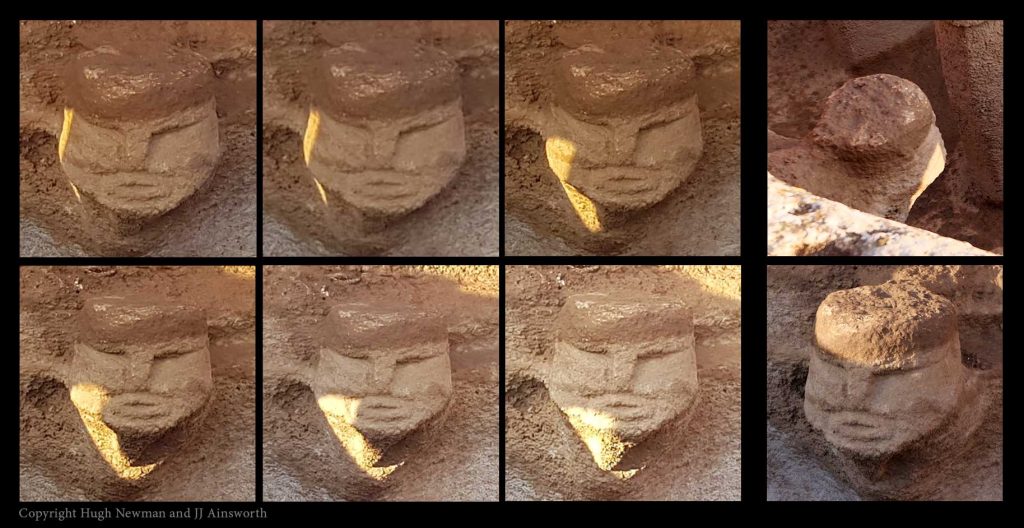
Photos of sunlight illuminating the stone head in the Pillar Shrine at Karahan Tepe on 20th December 2021. The 6 images on the left (top left to bottom right) show the movement of the light over a 45 minute period. Top right corner: View of stone head from behind and above showing the right cheek illuminated. Bottom right corner: View of head at 8.50am with the forehead and scalp illuminated.
Photos: H. Newman, JJ Ainsworth
It also appears from the layout of the main enclosure (Structure AD) that the sun would have beamed through between the two central pillars when they were upright, going through the 70cm-wide porthole at a sharp angle, before hitting the stone head, illuminating the chamber as described above. Necmi Karul stated that the stone head “looks to the entrance”5, meaning towards the porthole stone, as though the eyes were carved to show it looking through the hole towards the winter solstice sunrise.
At this point, it is worth noting that natural features at the site may have been originally recognised by the builders, perhaps seeing the stone protrusion (which later was carved into the shape of a head and neck) and a natural holed-stone in the upright bedrock. We hypothesise that this area was chosen to be an early observation platform used by star-watchers, possibly from Göbekli Tepe, before it was built into what we see today.
Archaeoastronomical Analysis
“The two solstices were strongly emphasised… Midwinter, moreover, was recorded almost twice as heavily as midsummer… It is clear the turning points of the year, particularly the time of change from darkness and cold to light and warmth, were of very great importance to prehistoric people.”6
We sent our initial findings to Andrew Collins, who, with archaeoastronomer and engineer Rodney Hale, checked if this alignment was valid during the era of Karahan Tepe. They found that in 9000 BC, the sun’s rays would have passed through the porthole at a slightly better angle than it does today, giving a clear illumination of the stone head.
We returned to Karahan Tepe in December 2022 with Collins to observe the sunrise over three consecutive mornings to get a more accurate reading of the phenomenon. Before we give you our results, note that over the past 11,000 years, the angle of the ecliptic has shifted by about 1º. The earth was at its maximum tilt in 8700 BC, which is very close to the date of Karahan Tepe. This solstice angle would have been very close to the extreme solstice angle at its most southerly position as part of the 41,000-year cycle at 24.5º (it is now at 23.44º). This change in the earth’s tilt from the obliquity cycle slightly changes the position of the winter solstice sunrise over millennia. This means that when Karahan Tepe was being constructed, the angle was approximately one degree further south than today at the latitude of Karahan Tepe.
The timing of the solstice has shifted considerably due to the Precession of the Equinoxes (a 25,920-year-cycle where a slight wobble of the earth’s axis shifts by 1º every 72 years) from around mid-February in 9000 BC to around December 21st in the current era (based upon the modern calendar). However, this does not affect the position of the sunrise at the time of the winter solstice. The winter solstice was then, and is now, the shortest day and longest night of the year. This has all been taken into account in this analysis.

A few minutes after sunrise on December 21st 2022, at Karahan Tepe, utilising the Theodolite App to record data.
During our visit in December 2022, we took multiple photo stills using the Theodolite App (above) of the sunrise as it occurred on the horizon and noted its position on the landscape. We later compared this to our initial readings in 2021 and to where the sun would rise in 9000 BC using Stellarium Astronomy Software.
On 20th December 2021, the sunrise was at 7.37am; this is an azimuth 119º50’. The sun starts shining through the porthole at 7.47am at azimuth 121º28’ and 2º altitude and continued until 8.30am at 128º12’ azimuth at an altitude 8º50’.
On the winter solstice in 9000 BC, the sunrise was at 7.57am; this is an azimuth 121º1’. Ten minutes later, at 8.07am the sun reaches 122º44’ azimuth and altitude 2º when it starts illuminating the stone head. This would continue, as it does in 2021, for about 45 minutes. This takes into account refraction for a temperature of 15º Celsius.

The direction of the sun would pass between the two upright central pillars and through the porthole stone between structure AD and the Pillar Shrine illuminating the stone head during the winter solstice c.9000 BC. It can still be viewed today.
To summarise, the sun would appear just over one degree to the right (south on the horizon) compared to where the sun is located in the current era. The sun’s average diameter is 0.536º in width. Basically, just over one sun-width would fit between the current sunrise and that of 9000 BC (due to the change in the ecliptic). The sun’s rays would have passed through the porthole at a slightly lower angle than today, which is notable and would give a better illumination of the stone head. This is because rather than the initial light hitting the back of the neck of the stone head, it would begin closer to the face and therefore, illuminate it in a more complete way. These elements combined prove that this alignment was not only valid 11,000 years ago but would have provided a better light effect on the head. We can now confirm that the alignment was deliberate, and the precise location of the carved hole in the porthole stone was essential for this purpose.7
This particular discovery at Karahan Tepe may have been the world’s first sundial (or a negative sundial, as the light rather than the shadow is the marker), as it measures the solar year to within a few minutes. It is arguably the world’s oldest known ‘solar clock’ using the winter solstice to restart the cycle. The light coming through the porthole stone during the equinoxes and summer solstice sunrises (and all in-between) would be out of line with the stone head and would not touch any of the pillars in the Pillar Shrine, only illuminating part of a blank wall between the porthole and the head. Therefore, the winter solstice alignment at Karahan Tepe works perfectly as an annual marker to begin the year and can still be witnessed today.
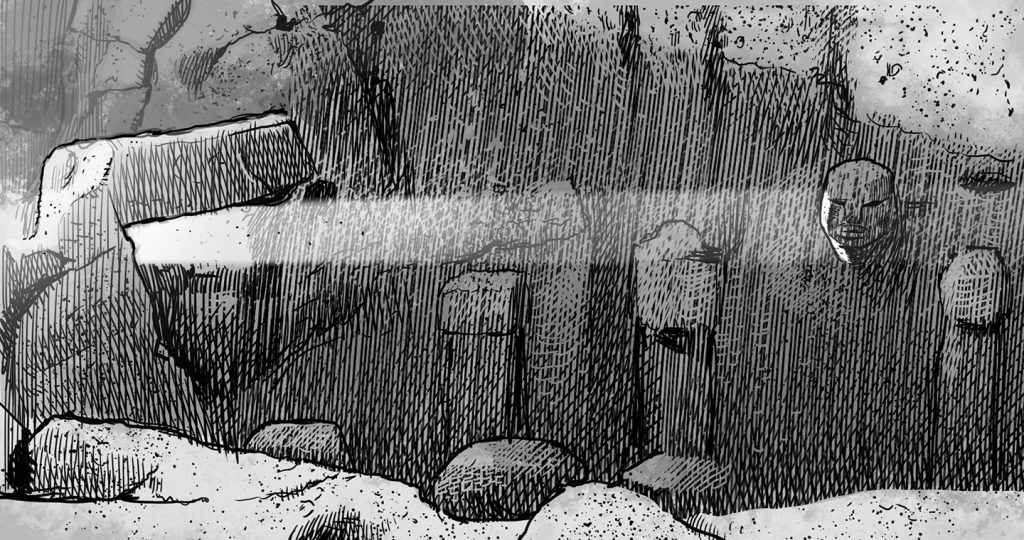
Artistic impression of sunlight shining through the porthole stone onto the stone head in the Pillar Shrine (Structure AB) at Karahan Tepe on 20th December 2021. This phenomenon only takes place at this time of year. Art by Dan Lish.
21st December 2022. Timelapse showing the full process of sunlight shining through the porthole stone onto the stone head in the Pillar Shrine (Structure AB).
Winter Solstice Alignments Worldwide
Archaeoastronomers are thought to usually look for the moment of sunrise to use as a specific time marker, but as we witnessed at Karahan Tepe, its first effects are about 10 minutes later. Numerous other sites which are famous for their solar alignments also follow this rule. For example, the winter solstice at Newgrange (c.3200 BC) in the Boyne Valley of Ireland is also ‘late’ in astronomical terms as it begins 4 minutes after sunrise and lasts for a total of 17 minutes. The sun’s light passes through a very small holed stone (lightbox) above the main entrance, illuminating the passageway and roofed chamber, highlighting certain carvings and a stone bowl on its way through. Of interest to our study was the fact that a 24cm-long polished sandstone phallus was found inside, with archaeologists commenting that fertility rites may have been carried out there.8
The original Gaelic name of Newgrange, An Uanh Greine, means ‘Cave of the Sun.’ At nearby Loughcrew, the equinox sun (in March and September) illuminates numerous carvings moving slowly west to east across the inscribed stone. This takes 50 minutes to complete.
Further examples of winter solstice sunrise alignments are found worldwide. At Karnak in Egypt (c.2055 BC), for example, for 25 minutes, the sun’s rays pierce the Sanctuary of Amun Ra, finally reaching the ‘Holy of Holies’ in the heart of the site. On Rapa Nui (Easter Island), a system of holes bored in the rock at the Orongo ruins was found to indicate the December 21st solstice (summer solstice in the southern hemisphere).9 In Malta, the megalithic temple of Ħaġar Qim (c.3600 BC) has an entrance orientated to the winter solstice. Direct sunlight passes through the main doorway and falls on the main altar. As the sun rises higher, it shifts to the left side along the main corridor and reaches the total length of the passageway before it begins to retreat. A similar phenomenon happens at Mnajdra (c.3500 BC), where a dagger of light illuminates a vertical slab in the first apse. On the summer solstice, it appears on the other side of the apse.10 Many Maltese sites have porthole stones, like those found at both Göbekli Tepe and Karahan Tepe, which were utilised to direct the sunrise light into the interior of temples. However, according to Lenie Reedijk and moving closer to the era of Karahan Tepe, Ħaġar Qim may have aligned to the setting of Sirius in 9150 BC when it started to appear just above the horizon (similar alignments have been proposed at Göbekli Tepe11). This could push the dating of Maltese temples back to the time of the Taş Tepeler sites in Turkey.12
Two substantial summer solstice alignments have been found in Israel: at Jericho (8300 BC) and Atlit Yam (7400 BC to 6000 BC). Jericho, famous for its walls and stone tower, is located in Palestinian territory east of Jerusalem, with continuous occupation since Pre-Pottery Neolithic times. The Jericho Tower dates to 8300 BC and is 9m wide, and 8m tall with an interior stepped passage which orients to azimuth 290° (or 20° north of west). 10,000 years ago, the summer solstice sunset would have illuminated the passage of the tower.13
Atlit Yam is a submerged late Pre-Pottery Neolithic B complex, situated 30 ft underwater off the Northern Carmel coast, covering 10 acres. Its notable feature is a semi-stone circle with cup-marks on it. Next to the circle are parallel stone walls which align to the summer solstice sunrise, like we find at Stonehenge. Archaeoastronomer Clive Ruggles confirmed that the two corridors at Atlit Yam were: “… oriented in the direction of sunrise on the June solstice.”1

The summer solstice sunrise alignment at Atlit Yam marked by red lines along the double-wall. Image M. Sibson, source.
Stonehenge (c.3000 BC), famous for its summer solstice sunrise alignment, is also aligned to the winter solstice sunrise.15 There is a direct sightline that runs through the monument, aligning along the ‘Altar Stone’ going through a deliberately carved notch (which frames it perfectly), pointing directly at the rising point of the sun over Coneybury Hill in the distance. Stonehenge also contains a perfect winter solstice sunset orientation matching the direction of the avenue (exactly opposite to the summer solstice sunrise).16 Feasting and community gatherings also took place over the winter solstice at nearby Durrington Walls. Furthermore, three huge Mesolithic post holes date the earliest phase of the site back to 8000 BC.
In Carnac, Brittany, the Crucuno Quadrilateral megalithic site (c.4000 BC) incorporates the winter and summer solstices to its corners. It is laid out as a 3-4-5 Pythagorean triangle, measuring 30 by 40 by 50 megalithic yards in size (a megalithic yard is 2.72 feet or 0.83 metres and used frequently in British stone circles). Dolmen de Rondossec has two chambers aligned to the winter solstice, where the back stone gets illuminated. The angle of the solstice at this latitude is the precise diagonal of a 3-4-5 Pythagorean triangle. This was incorporated not only into the sites but also over vast distances between sites. Strikingly similar geometries have been found in the Taş Tepeler region (details of this are in the book Göbekli Tepe and Karahan Tepe: The World’s First Megaliths by Hugh Newman).
If we move closer to the modern era, one fascinating example can be found at Chaco Canyon, Arizona (c.490 AD). A small yet remarkable petroglyph of a spiral or labyrinth records a blade of light entering from a thin gap in the rocks above, marking the solstices. On the winter solstice, two daggers of light appear either side of the petroglyph for 49 minutes, during which they precisely frame the spiral.17 On the summer solstice, one ‘light dagger’ illuminates the central axis of the spiral.

The Karahan Tepe exhibition at Şanlıurfa Archaeology Museum. Several human statues appear to show individuals looking towards the sky. Are these representations of early astronomers?
Photo: H.Newman
Did a roof at Karahan Tepe block the alignment?
Artistic representations of the site suggest the main enclosure at Karahan Tepe once had a roof held up by the T-pillars. However, no evidence of any roofs has been found at either Karahan Tepe or Göbekli Tepe. Only circumstantial evidence suggests these were instead ‘houses’.18 In regards to Karahan Tepe, if a roof was in place, it would have been quite possibly the largest in the world at the time, as the enclosure is nearly 23 m (75 ft) wide. Even if one was in place, it could easily have left an opening to the southeast to allow the low passing of the sun to illuminate the stone head on the winter solstice.
Having a temporary roof over the Pillar Shrine may have some basis in reality as it has clear ledges and flat surfaces to place one there. However, the two rows of pillars are at different heights, and the top of the head is also slightly higher than both. Furthermore, a roof being used during this time of year would have certainly enhanced the experience, illuminating the chamber in a more profound way.
The winter solstice phenomena, having been directly observed in real-time, is hard to ignore, so even if a roof once existed, it may not have hindered astronomical observations, much like we find at sites such as Newgrange.
Summer Solstice Sunset and a Lunisolar Calendar
Further research by Andrew Collins has revealed that the Milky Way plays an important role in the solstices. During the night, at the time of the winter solstice, the Milky Way slowly rises horizontally through the sky before the sunrise occurs. Furthermore, in October 2021, Collins found a summer solstice sunset alignment oriented along the primary direction of the second unfinished hypogeum pit (Structure AA). This revealed that in 9000 BC, the Milky Way would be vertical above the horizon 2.5 hours later in the same position at the sunset.19
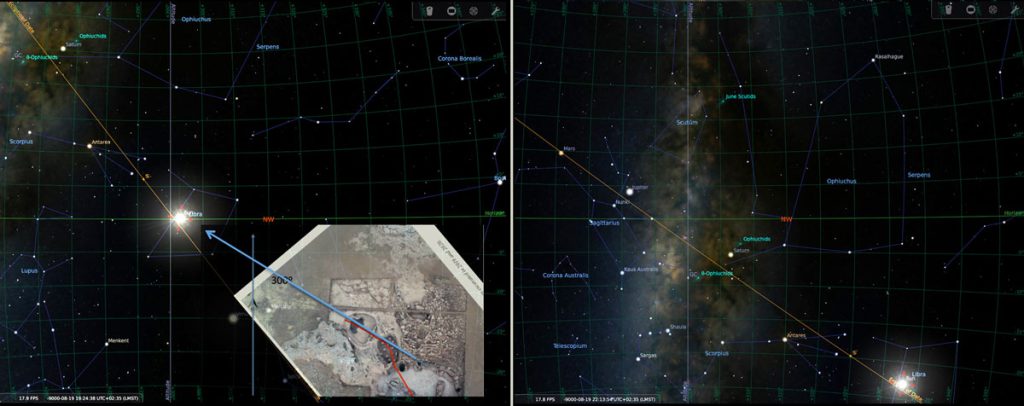
Left: From Karahan Tepe at 9000 BC, the sun at midsummer set at 301º 29’ 54.4” at approximately the same axis as Structure AA (The Unfinished Pit). Right: At 2.5 hours later, the Milky Way would have been seen vertical on the horizon as this same azimuth. The nearest constellation Sagittarius, with Ophiuchus and Scorpius having just set.
Image Stellarium/A.Collins
Collins also found that from the southern entrance of the main enclosure (Structure AD), when looking through the porthole stone over the phallic monoliths in the Pillar Shrine and to the peak of nearby Keçili Hill (where there are ruins), the setting of Cygnus would have occurred in 9000 BC, as it does at Göbekli Tepe.
At Göbekli Tepe, Enclosure F (a smaller, later structure west of the main group) is oriented west-southwest to east-northeast to within a degree of the rising of the sun at the time of the summer solstice and the setting of the sun at the winter solstice.20
Martin Sweatman has suggested a Lunisolar calendar was in use at Karahan Tepe (and on Pillar 43 at Göbekli Tepe).21 The 11 pillars in the Pillar Shrine, he proposed, represent the 11 Lunar months and 11 epagomenal days (intercalary month), which are used to complete a solar year. The free-standing 11th pillar could represent the summer solstice, which Sweatman believes was a unique epagomenal day at Göbekli Tepe. The stone head may represent the final lunar month. To summarise:
Stone Head = 1 lunar month = 29 or 30 days
+ 11 pillars = 11 more lunar months = 354 days
- 11 pillars = 11 epagomenal days (of which one, the summer solstice, is special) = 365 days at 1 solar year
Although Sweatman’s ideas do not take into account the newly discovered alignment (which could give credence to his theory), it certainly contributes to the debate. The winter solstice sunrise alignment is highly likely to have been the observable annual time-marker that restarted a calendar every year. The moon, as Sweatman emphasises in his paper, may also have played a part in the calendrical and ceremonial cycle.
The Moon and Eclipses
It is an astronomical fact that there would have been certain full moons near the summer solstice, which moved along the same path as the winter solstice sun. This bright full moon could have lit up the stone head through the porthole, much like the sun does during the winter solstice. Skywatchers at this time would have identified these moments during the 18.6 year period when the full moon is located on or near one of the nodes in the solstice positions. We asked Andrew Collins and Rodney Hale to investigate this, and they concluded: “In 9015 BC, according to Stellarium and Hale’s calculations, the full moon would indeed have cast its light into Structure AB to illuminate the stone head on the west wall, just as the sun would have done at the time of the winter solstice.”22 This would have occurred just before the summer solstice (which would have been during August in 9015 BC).
A full moon in such a position has a high likelihood of being eclipsed because it is always located directly opposite to the sun. When the sun is at standstill during the summer solstice, and the moon takes the position of where the sun was at winter solstice, eclipses would occasionally occur and could have been recorded at Karahan Tepe by direct observation. If one year it occurred on or close to the summer solstice, it may also have coincided with the Milky Way rising vertically in the sky 2.5 hours after sunset. More research needs to be carried out to check this, but this rare alignment of the full moon, a possible eclipse, and a vertical Milky Way would have been a spectacular sight to behold during the summer solstice period. The solstices were clearly important time markers for the megalith builders in the Taş Tepeler region.

Stellarium view of the full moon on the summer solstice (August 11, 9015 BC) from Karahan Tepe. Having reached an azimuth of 128º it now sits at an altitude of 6º 49’, precisely in line with the porthole and the carved head inside the site’s Pillars Shrine (Structure AB)
Image Stellarium/A.Collins
The Importance of Venus in Time-keeping
In addition to all this, there is potential evidence of longer cycles recorded at Karahan Tepe. Every eight years, the planet Venus (‘the morning and evening star’) rises one hour before sunrise on the winter solstice on the same path as the sun. Its light may have been bright enough to illuminate the giant stone head through the porthole stone; this occurring, for example, in 9002 BC, 9010 BC, 9018 BC, and so on. This same Venus alignment has been reported in connection with Newgrange’s own winter solstice phenomena, where it could have been bright enough to illuminate the interior of the chamber.23
Over a period of eight solar years, Venus completes five synoptic cycles, each one being 584 days in length. At the end of this time, the planet returns close to the same position it started the cycle. It gets more compelling when five cycles complete a larger forty-year cycle, but this time it returns to its exact position in the sky (although two days earlier).
In the same years as Venus’ heliacal rising at the time of the winter solstice, the planet rises 30 minutes after sunrise on the vernal equinox (around March 21st in today’s calendar); this occurring once every eight years (or five Venus years), and since Venus is the third brightest object in the sky, it could well have been visible even in daylight. However, on the equinoxes of 9004 BC, 9006 BC and 9009 BC, it would have risen between one and two hours before the sun, indicating it was being observed during the equinox periods, and was clearly visible in the night sky, again, following the same path as the sun.
The stone head in the Pillar Shrine faces east, towards the spring and autumn equinox sunrises. Along with this, a channel is carved out of the bedrock from the Pillar Shrine in this direction. The eastern sky is also the direction of another phenomenon that occurs during the equinox sunrise: the rising of the constellation of Leo, which may have been seen as a leopard rather than a lion (due to the significant number of leopard carvings at Karahan Tepe). This appears in the night sky just before sunrise. Authors Robert Bauval and Graham Hancock controversially theorised that the Sphinx in Egypt faces eastwards as a marker for the rising of Leo during the vernal equinox as far back as 10,500 BC24 (In the current era, Pisces rises in the east). We must ask now, was it observed at sites such as Karahan Tepe first, but in the guise of a leopard?
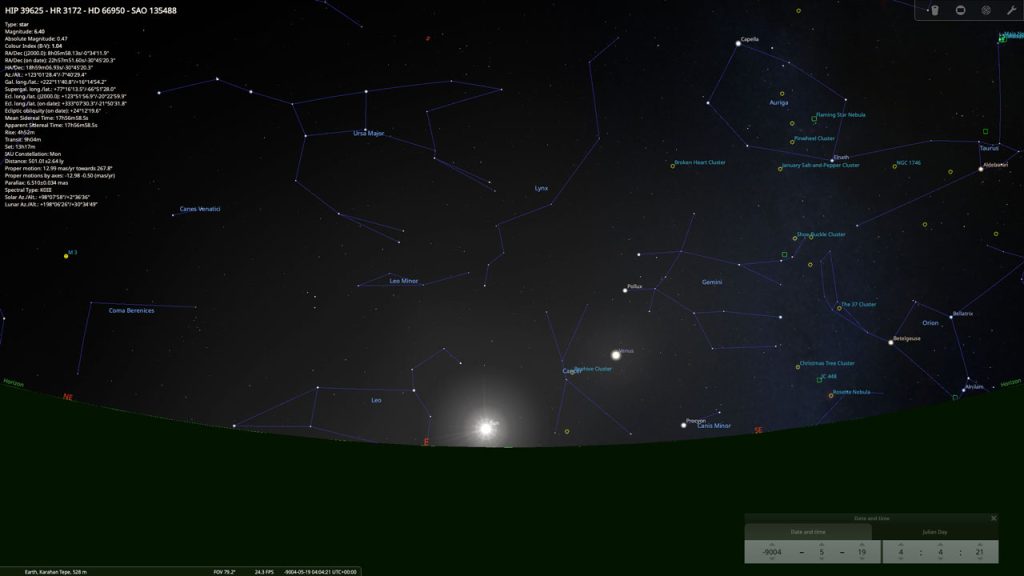
Stellarium view of Venus, the sun and Leo rising in the east on the vernal equinox in 9004 BC. The sun rises after Venus.
Combined with the winter solstice marker in time, Karahan Tepe may have been the innovation centre designed to bring the movements of the sky down to earth and fix these calendars in place, no doubt counting the days to establish important times for celebration and also to know when to plant crops and breed livestock. Another Taş Tepeler site that has come to light called Sayburç, contemporary with Karahan Tepe, has a tantalising translation of its name: Say = counting, burç = sign of the zodiac, Birc (in Kurdish) = tower or watchtower. It seems that even place names still today hold keys to understanding the purpose of these sites.
Closure
At some point, perhaps close to 8000 BC, it was decided to close down Karahan Tepe. After nearly 1500 years of use, the final observation of the winter solstice alignment may have been chosen for this special day before the Pillar Shrine was carefully filled in with stone, debris, soil and finally, larger flagstones completing the process. Those who took part in this decommissioning of the site can be imagined foreseeing the future, envisioning who would be the first people to once again witness this unique winter solstice illumination. That day came on 20th December 2021 and will no doubt be witnessed by many more in the years to come.
References:
1. Newman, Hugh. The Forgotten Stones of Karahan Tepe, Turkey. 2014. https://www.ancient-origins.net/ancient-places-europe-opinion-guest-authors/forgotten-stones-karahan-tepe-turkey-001917
2. Prof. Dr. Karul, Necmi. Buried Buildings at Pre-Pottery Neolithic Karahantepe. 2021. Türk Arkeoloji ve Etnografya Dergisi 82
3. Sweatman, Martin. Representations of calendars and time at Göbekli Tepe and Karahan Tepe support an astronomical interpretation of their symbolism. 2021/2023. https://martinsweatman.blogspot.com/2023/03/another-update-to-my-lunisolar-paper.html
4. Newman, Hugh, and Ainsworth, J.J. 2021. Karahan Tepe: Stunning New Discovery of Winter Solstice Sunrise Alignment. https://www.ancient-origins.net/news-history-archaeology/karahan-tepe-winter-solstice-0016212
5. Graham Hancock interviewing Necmi Karul inside the Pillar Shrine on Ancient Apocalypse, Episode 5, ‘Legacy of the Sages’, Netflix, 2022
6. Burl, Aubrey, The Stone Circles of Britain, Ireland and Brittany. Yale University Press, 2000. p.62
7. Personal communication by email with Andrew Collins and Rodney Hale. Also, during the initial excavation of the Structure AB, it shows that the top part of the portal stone was broken off, but whether this was an accident by excavators, or was found like this is unclear. It was subsequently repaired and put back in its original position by the archaeologists. This broken lintel can be seen in Graham Hancock’s Netflix show Ancient Apocalypse (2022) where filming took place in late 2020, just before the repair. Many other ancient sites have been restored in a similar way and do not affect alignments like this one at Karahan Tepe.
8. Murphy, Anthony and Moore, Richard. Island of the Setting Sun: In Search of Ireland’s Ancient Astronomers. Liffey Press 2006. p.173
9. Ramirez and Huber. Easter Island, pp. 53, 110 and https://www.ancient-wisdom.com/easterisland.htm
10. Degirmenci, B.Kristin. Sun Worship and the Magnificent Megalithic Temples of the Maltese Islands. https://www.academia.edu/34500080/Sun_Worship_and_the_Magnificent_Megalithic_Temples_of_the_Maltese_Islands
11. Magli, Giulio. Sirius and the project of the megalithic enclosures at Gobekli Tepe. 2013
12. Reedijk, Lenie. Sirius: The Star of the Maltese Temples. Malet Books, 2018. p.126
13. Barkai, Ran and Liran, Roy. Midsummer Sunset at Neolithic Jericho. Time & Mind. Vol 1, Issue 3. Pp.273-284. 2008
14, Archaeoastronomer Clive Ruggles in The Mystery of Atlit Yam Documentary, Jean Bergeron 2014. However, he states it is the summer solstice sunset in https://link.springer.com/chapter/10.1007/978-3-030-37367-2_23.
15. Banton, Simon. 2022. The Secondary Solstice Axis. https://www.stonehengemonument.co.uk/2022/
16. Daw, Tim. 2012. Stonehenge – The Resurrection Alignment. https://www.sarsen.org/2012/07/stonehenge-resurrection-alignment.html
17. https://www.ancient-wisdom.com/mexicochaco.htm
19. Andrew Collins Karahan Tepe Update #2 Prof. Necmi Karul’s paper on the new discoveries explained. https://youtu.be/GSlGuiIINDA
20. Collins, Andrew. 2014. Karahan Tepe: Gobekli Tepe’s Sister Site Another Temple to the Stars? https://www.andrewcollins.com/page/articles/Karahan.htm
21. Sweatman, Martin. Representations of calendars and time at Göbekli Tepe and Karahan Tepe support an astronomical interpretation of their symbolism. 2021/2023. https://martinsweatman.blogspot.com/2023/03/another-update-to-my-lunisolar-paper.html
22. Collins, Andrew and Hale, Rodney. 2022. A Brief Look at Full Moon Risings at Karahan Tepe for the Epoch 9000-9015 BCE and Some Thoughts on Lunar Synchronizations with the Interior of the site’s Structure AB (Pillars Shrine) (unpublished).
23. Knight, Christopher and Lomas, Robert. Uriel’s Machine: The Prehistoric Technology That Survived the Flood. Century, 1999, p.281
24. Hancock, Graham and Bauval, Robert. Keeper of Genesis: The Quest for the Hidden Legacy of Mankind. Heineman 1996, p. 76





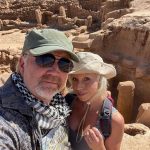
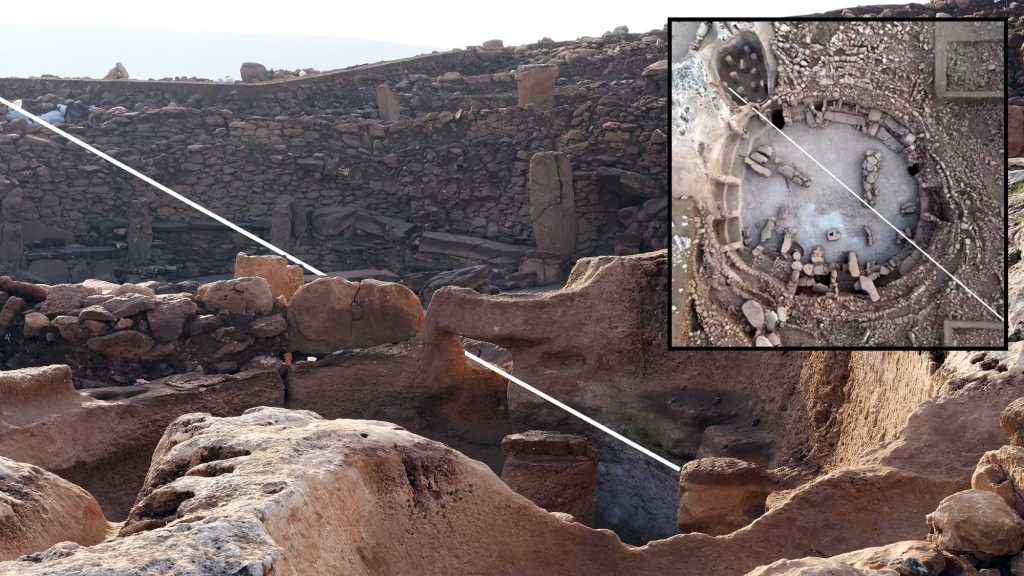
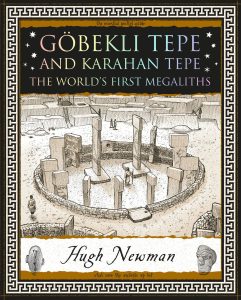

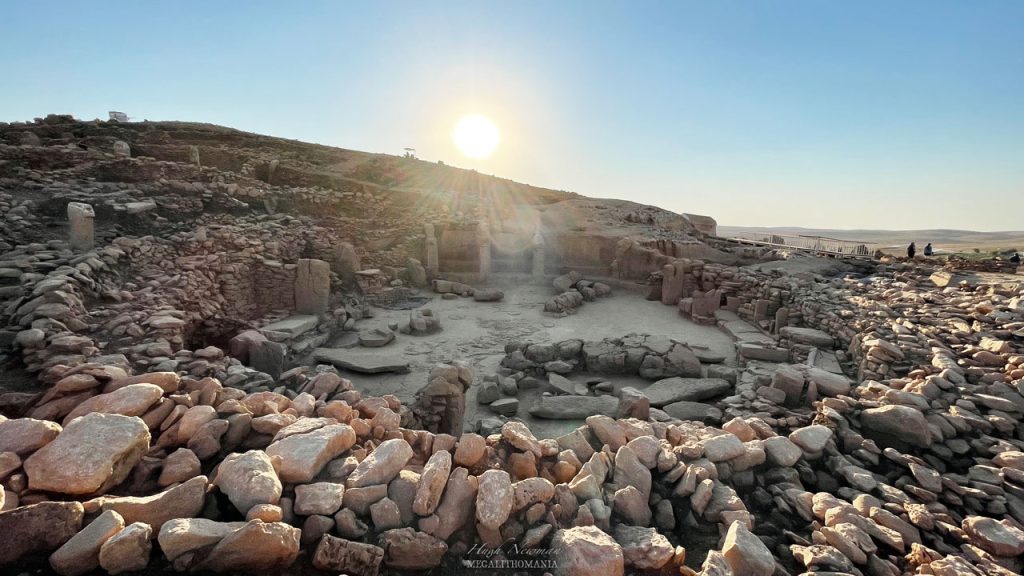
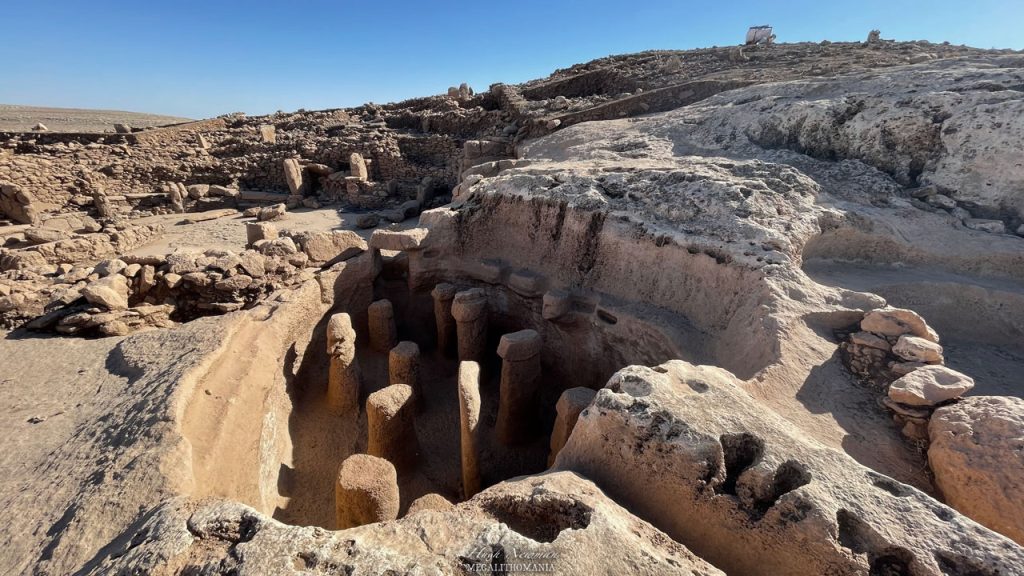


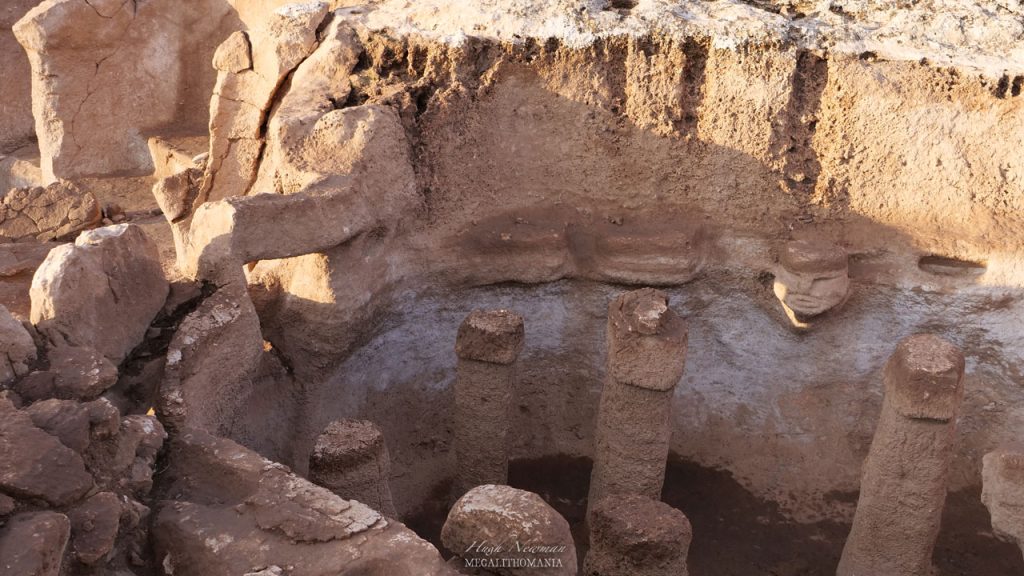
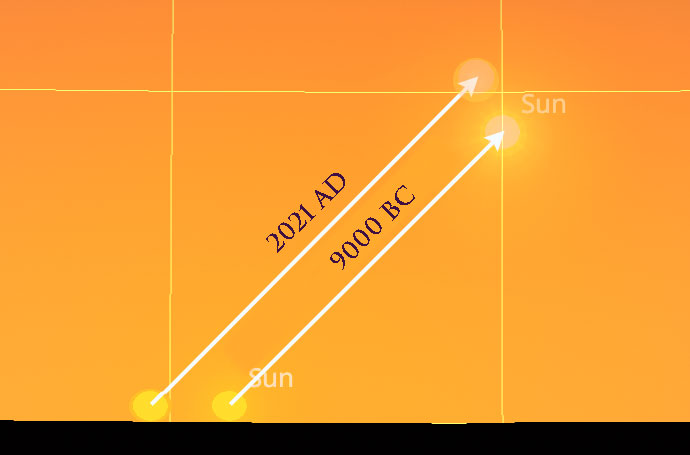
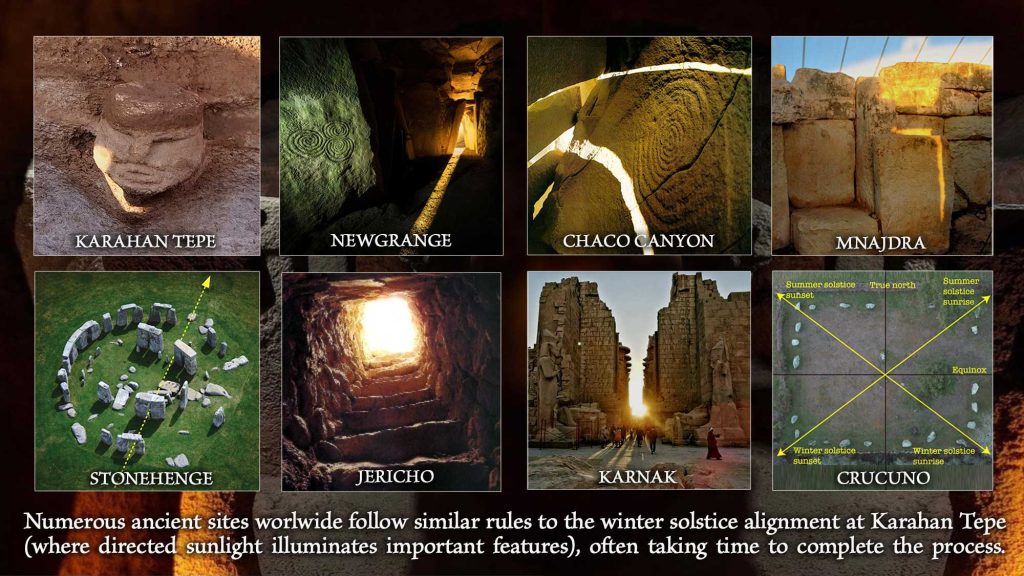

I wonder why the builders of the site didn’t sign their names or leave detailed records of their personal histories and events of their own lives? Or maybe the language they were using to pass down those specific details just hasn’t been deciphered yet.
These are good points. There are intricate carving on the top of the stone hill that look like a type of language which we will cover in an upcoming video on our YouTube channel. Later Sumerian myths might also give clues and we look at some of those in part two.
Hello Hugh and JJ,
Love to watch Megalithomania, great series. Thank you.
The following is a Mesopotamian ‘proverb’ recently retranslated. It mentions Harran – which I take to have been the name of the entire region – and is one of very few examples of the original AL TOR which became the Arabian name Altor for Taurus.
Of even greater interest in light of the recent discovery at Karahan Tepe is the inclusion of KARA. This is the alphabetic equivalence of a composite Sumerian word for a place joining land and water, given as the ‘harbour’ or ‘quay’ but also ‘to flee’ and ‘to save’ in conventional dictionaries. The astronomical reference is self evident, particularly as HAR RA AN translates (always according to conventional dictionaries) to the ‘churning mill of the sky’ where RA is ‘to thresh’. There are several possible ways in which to translate it through the monosyllabic method. I’ve given the short and most superficial version here:
UKUR3 HAR-RA-AN AL-TOR-RE KA-TA KARA HAR-RA AB-SU-SU
On the churning mill of Harran, all youths are weighed.
Their questions (to know their fathers) are carried down and into the abyss will sink.
(ETCSL Sumerian Proverbs Coll.6.1.02, lines 52-53)
This is a humorous take on and also source of the far later Greek Phaeton myth. Again (I still feel obliged to insist despite a growing body of fully referenced work) all of the words are translated through the academic dictionaries with the exception of AL, given here as ‘all’ and, of course, the presence of Taurus through AL-TOR. TOR/TUR is given as ‘child’. Child of Taurus and young bull?
The tablets comprising hundreds upon hundreds of these so-called proverbs date to the Old Babylonian period of ca.1900-1600 BC (and some now proven to go back to at least 2500 BC), an almost completely untapped source of information from that region of the world and from far further back than we are expected to believe. I’ve retranslated and posted some on my site and kept a few, including this one, in reserve to accompany an ongoing translation. Onwards and upwards as they say.
Thanks for the great info you have provided. The earliest known name of the site was Kecili Tepe (not Karahan Tepe). Even today it is still called that by locals. We will cover what we think the meaning of this is in part two. Do you have Sumerian translations for this?
Yes, I noticed that the place is also given as Kecili although there has to be a reason for naming or renaming it Karahan. Karahan didn’t spring out of nowhere and apparently it’s also used for other places as is Kecili. The same has been said of Gobekli – being illegitimate and Portasar its proper name. That’s a purely modern take. I find them to be of equal value and GO-BE appears just one line away from KILI (meanings include ‘block’ and ‘to encircle’.) in the original text of The Instructions of Shuruppak (2600 BC), not a coincidence in 280 lines of text.
I’ve written about that more than once here. See my several posts on the AoM board under the OP titled Nuraghes of Sardinia and the Quest for Etymologies. I even published the image of POR/PUR, the ‘bowl’, inside an untranslated T-shaped word from the 4th millennium and from that region of the world! Twice! The three baskets of pillar 43 are also mentioned in another section of that text. Properly translated, Sumerian is a gift that keeps on giving. This isn’t the language of either Turks or Armenians. It’s the original language of Mesopotamia and fed both of them.
Kecili is potentially equally interesting and I would be interested to know if it has further meaning in Turkish. In Sumerian, it might stem directly from KE, meaning ‘place of’. Then again, was it ‘sili’ or ‘kili’ as in Go-be-kili? SIL/SHIL/TARA would be equivalent to Celtic Tara with the meaning ‘cut’. It might also read KESH2, symbol of the ‘binder’. Not enough to go on without more information or coming across them together in a text.
KAR/KARA applies equally well to both Egyptian Karnak and French Carnac (KAR-NA-AK) where NA is ‘stone’ and AK ‘to do’ (both given meanings once again). KAR comes from TE-A, TE being visually two crosses joined by a horizontal line associated with A being the flow, primarily of water but not only. It’s also given on more than one occasion after KA TA (think ‘cataclysm’…) and I see in that a reference to questioning; probably astronomy, forecasts, previsions, prophecies, and potentially in the context of mind-altering rituals – depending on your mindset!
As for the ‘han’ of Karahan, I haven’t found anything significant collocated with KARA so far (apart from KARA opposite HA-RA on a lexical entry.) but it would easily translate to HA-AN, fish of the sky, celestial fish, a highly evocative name as far as I’m concerned. Also note Graham’s mention of ‘hanif’ on p.359 of Magicians of the Gods in the context of the Sabians of Harran:
‘which appears in the Koran referencing ancient pre-Islamic faiths that were regarded as pure’.
Again, none of the above is pure conjecture. But if I were to take that leap, I would wonder if there was a snake and/or toad pit at Karahan.
I don’t want to come off as too critical, but in my opinion, there are simply too many stones resulting in too many bearing lines and too many relations.
The main alignment is really just the relationship between the holed stone and the stone head, not the main enclosure (which has multiple stones in it).
Sumerian language is built on Armenian, as is its civilization layer. Thus it would be useful to understand old Armenian when deconstructing names: ie. Kara, Kar = stone, and incorporates ARA the god of the sky, which overlaps with AA-RA in Egypt (‘the house of Ra’). Also Harran is a modern name, the oldest mention c.8000 BC is HARRANU, meaning teh valley or plain of Anu, also a god of the sky, along with its regional variants Ani and Ana
Sorry, Freddy, but it is simply untrue and certainly unprovable to state that Armenian preceded the language of Mesopotamia – known today as both Sumerian and later Akkadian. We have already had this lopsided argument elsewhere and I take exception to someone who continues to push their theories as fact in this regard. Your ‘civilization layer’ is meaningless where language is concerned. The Mesopotamian writing system predates all others, a very well-known fact. That is not to say that the overlaps don’t exist. I’m sure they do. But you have the order wrong. Sumerian is the original language that fed the Armenian, not the other way around. And the same goes for the Turkish. Anyone seriously studying etymology must necessarily go to that source. As you must surely know, there has so far been no discovery of anything ‘mentioned’ in writing from 8000 BC but I remain hopeful. Perhaps Hugh and JJ are about to surprise us all.
It’s also provably wrong to state that Harran (the region of Karahan Tepe) is essentially a modern name since it results from three original words, the much-documented HAR-RA-AN, which I have translated through the monosyllabic method and using conventional meanings to ‘Churning Mill of the Skies’ – given in both lexical lists and literary texts from that same region and written at a time which seriously predates any trace of written Armenian. Even the academics would not/could not contest that fact.
And, of course, the same goes for KAR/KARA. See my translation of a 3,600 year old proverb here above. The only sites from which to take serious information about the basics of Sumerian words are those lexicons published online by the universities of Oxford and Pennyslvania.
I suggest you contact the linguists and historians at Yerevan State university. Or the published works of Vehan Setyan. They will school you on this little known side of history, which is how I learned about the foundation of Sumerian language. So it is not “my theory”, it is academic fact. There is plenty of evidence of Armenian language preceding Sumerian by thousands of years. I’ll leave it to you to learn something new, and perhaps learn to curb your arrogance, which is all too obvious.
I forgot to mention that there is ample evidence of Armenian script and pictograms in the Armenian Highlands prior to 8000 BC. Since Sumerian appears around 5000 BC… well, there’s your precursor. We’ve all wondered how Sumerian language and culture magically appeared fully formed.There’s your answer.
Don’t worry Freddy. These people who intentionally disregard the truth about these sites and their historical connection to Armenia are going to learn the hard way about the truth of history and who these ancient ancestors actually were and are. You are on the right path Freddy. Thank you for being a seeker of truth and for this, you will be shown more truth and you will be remembered and welcomed by our people when the time comes.
Yours truly, Ar
Suggest away, Freddy. Facts don’t change – not even if you batter me really hard with your superior academic sources. The oldest and the only writing system found in the region of Mesopotamia is Sumerian which gave birth to the later Akkadian. If you can prove otherwise, then do so. Provide exact references of the Armenian documents in whatever form dated to 8000 BC and include mention of the archaeological layers at which they were found. Add a translation to prove they refer to Mesopotamia for good measure. Anything less is theory which should not be presented to the world as fact – not by you, not by anyone.
I have spent quite a few years now and countless hours studying and retranslating the texts of Mesopotamia and have not come across any evidence, anything at all that might suggest that those monosyllabic words derived from other older sources. What I do have is a bucket-load of examples to prove that Sumerian is the source of many words in other later languages of which Greek and Latin, so very possibly Armenian too. My own translations, of which a long literary text and numerous proverbs, contain enough references to demonstrate that this is indeed the language of the culture that constructed or, at the very least, lived alongside the T-shaped stones – even to the point of copying them, showing the images in word form on 4th millennium clay tablets, for heaven’s sake!
I note that you don’t respond with evidence to counter my reminder that Harran is not, as you suggested, a modern name and that it is thoroughly Sumerian/Mesopotamian. I won’t hold my breath.
More than once now I have demonstrated direct links between the earliest form of the written Sumerian and the culture that existed in the region of Harran at the time of Gobekli Tepe (notably discussed in my books Before Babel and Lost Stones). To use the notion that a Sumerian civilisation (in the south) appeared out of nowhere in order to prove that Armenian is somehow older and more relevant is to present a very old and tired strawman. The rediscovered tablets were written in the language of Mesopotamia and of Harran, no doubt spoken there long before the first 4th millennium clay tablets were inscribed. How can I be so sure? Because the tablets say so. I’ll spell it for you again: HAR RA AN.
If you want to challenge me on this subject, Freddy, please provide evidence of everything you advance rather than inviting me to go looking for it myself. I have made mine abundantly available and don’t appreciate the ad hominem attacks for calling you out when you present theory as fact.
First, these are not MY theories, they are based on a multitude of published material and the research we all do as authors. Since your attitude in this and earlier posts is nothing short of confrontational and condescending, I will merely limit myself to pointing out the hundreds of references in Scotland’s Hidden Sacred Past, and The Missing Lands. Learning about the little-known prehistory of the Armenian region — which preceded Sumeria by at least 4000 years, and to all intents and purposes was the parent culture of the region — has provided a new window of understanding of the region as a whole, particularly monuments such as Karahan Tepe and Portasar (Gobekli Tepe) which lay within the region known as the Armenian Highlands. Back then there was no Sumer, no Mesopotamia, no Akkadia, no Hittite kingdoms. My point is that to apply a later Sumerian interpretation to monuments built by a parent culture that preceded it by a long margin (they are not even located in Sumeria) is to miss the potential for their true meaning.
I’m sure Madeleine will add some long diatribe now (she gives the impression of being the only one who knows anything about any topic, beware anyone who should contribute any facts to the contrary), but then the combination of arrogance and ignorance seldom allow progress in understanding the past.
Freddy,
Diatribe: The word most often refers to a bitter or abusive speech or piece of writing. (Myriam Webster)
That, of course, is the modern connotation of it. I invite you to find any ad hominem attacks in my words, any bitterness or abuse in the facts laid out fully in my long responses (in order to be absolutely clear). I invite you then to consider your own extremely vicious responses in light of the above definition. I also categorically refute your claim that I am ignorant of the subject in question which is, after all, Sumerian, a language that I’ve been studying and translating for quite some time. Contrary to your very nasty comment, you have absolutely no reason to suggest that I claim to know everything about everything. It’s not the case. But I do know a hell of a lot more about the original language of Mesopotamia than you.
It’s not my attitude that is confrontational. It’s the facts presented in opposition to your claim and that you don’t like because they don’t fit your narrative. The difference between us is that you are, as you say, an author of a book apparently based on the claims of others. I, on the other hand, am a mere translator whose books are based in what I myself find written down by ancient scribes. No intermediaries, no waffle, just clear and sometimes necessarily long explanations.
No doubt your take on Armenian history is of great interest and a good read. But the sites of Gobekli Tepe and Karahan Tepe lie within Mesopotamia and predate all others for the moment. Whatever is found elsewhere is highly unlikely to prove anything about the Sumerian language apart from the fact that it travelled – as I have said from the outset.
There exists a substantiated and visually highly convincing (Bowl pronounced ‘por’ inside a T-shaped symbol) origin for the name Portasar as found on 4th millennium tablets from that region – indicating that there is indeed an Armenian connection. Enough with the strawman claim that the language only existed in the south.
As you are addressing a hypothetical third party when insulting me, let’s leave it to ‘them’ to judge the merits of our arguments and to decide if one or the other is impeding progress in the understanding of the most ancient sites in northern Mesopotamia.
Another long one. There really is nothing more to say without repeating myself ad infinitum. Apologies to all.
KA TA GAN IG SHU A NU IG
The guardian at the mouth of death will ask questions before the door is opened.
Think before speaking. (ETCSL Proverbs Coll.3, line 310)
How do these ancient Solsticial Alignments still, align, after this many millenia? I mean, wouldn’t Procession have Misaligned such mechanisms, by now? Or, have I missed something?
May you all have a most excellent day
It is explained in this updated article. The Obliquity of the Ecliptic shifts the position of sunrise, not Precession.
1) Architecturally-speaking, I am very intrigued to see how a roof might be laid on top of the T-pillars. One might expect a ‘+’topped pillar to support arches in two directions (like ‘modern’ cathedral rooves), bit the ‘one-directional’ T-pillars would appear to suit only one-directional hipping, which would leave gaps, UNLESS the top of the T is not the base of the roof, but only a step towards it, surmounted by a layer of two-directional arches, maybe in wood, before the actual roof?
2) if this is, as ascertained, a ‘pre-pottery’ site, and yet had presumably quite a large population, what storage vessels were used for liquids and grain-foods, if there was no pottery?
3) thinking how glass and pottery production both probably arose from accidental observation of effects of heat on ingredients, and the often-cold nights at altitude in the region even in nowadays times, it seems likely that they had fire for warmth, and would have seen and developed these technologies UNLESS they already had something better. Now, they did have something better in terms of stone-working technologies, obviously, so perhaps we should be looking for evidence of better technologies than glass and pottery : ie not thinking of ‘pre-pottery’ in terms of less advanced and less-primitive, but rather ‘less-degenerate’ technologies ! If they had metal tools that were shaped without using very high temperatures………..
Thankyou for bringing us all these marvels of the Earth and our origins. I only wish you could do it faster and more completely.
“Academic fact” is an oxymoron, Freddy. That’s why we’re here and not some retarded university.